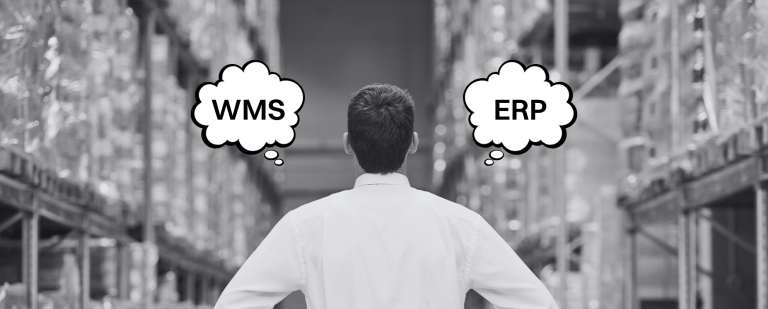
WMS or ERP? This is how they differ—and how they complement each other

In the day-to-day operations of a warehouse, it’s not enough to know how many products are in stock. You need to know exactly where they are, how they move, who handled them, and when. And that’s something an ERP, no matter how powerful, doesn’t always cover.
Many companies still confuse the functions of an ERP with those of a WMS. From the outside, the line between them may seem blurry, but inside the warehouse the differences are clear: one plans, the other executes; one records, the other optimizes; one offers a financial view, the other ensures operational efficiency.
When they are compared as if they were the same, mistakes are guaranteed: you end up choosing a tool that doesn’t solve the real problem.
Two systems, two different approaches
An ERP (Enterprise Resource Planning) is the system that supports the company’s core processes: purchasing, sales, finance, production, human resources, and, in some cases, basic inventory management. Its role is to ensure administrative traceability of everything that enters and leaves the business.
A WMS (Warehouse Management System) is specifically designed to manage the physical execution of logistics operations. It coordinates activity within the warehouse: inbound and outbound flows, internal movements, smart product location, order picking, inventories, and real-time control.
The ERP tells you what you have in stock. The WMS tells you where it is, how it moves, and how to optimize its flow.
What an ERP does (and doesn’t do) in logistics
ERPs offer logistics modules that enable management of inventory, receiving, and shipping, usually in a general or aggregated way. They are useful for planning supply needs, assigning budgets, or cross-checking information with customer or supplier orders.
But they are not designed for operational detail. Most ERPs are not built to manage detailed warehouse mapping across multiple sites, nor do they offer efficient picking workflows. Not all of them are connected to mobile terminals.
In complex logistics environments—where batch numbers, serial numbers, or expiry dates are involved—ERPs fall short. And when it comes to automating the warehouse, the ERP lacks the technical and functional capabilities to play that role.
WMS: the solution designed to improve warehouse operational efficiency
A WMS like IzyPro is based on a different approach. It is designed so operators, supervisors, and logistics managers can carry out daily tasks with precision, visibility, and efficiency. It’s the system that “speaks the language of the warehouse.”
WMS systems allow you to:
• Manage physical locations at any level (zone, shelf, pallet, box, unit).
• Define slotting and picking strategies based on product type or turnover.
• Integrate with RF readers, IoT sensors, or automated systems.
• Monitor inventory in real time without needing to halt operations.
• Apply smart rules for each type of order or customer.
• Generate alerts for errors, bottlenecks, or operational risks.
All this results in reliable data, greater productivity, fewer errors, and better customer service.
The ideal solution: integrate ERP and WMS
The most mature approach is to combine an ERP with a WMS. This type of strategic decision is especially relevant in a context where 98% of Spanish logistics companies plan to invest in digitalisation in 2025, making it even more necessary to carefully choose the right tech solutions.
The ERP structures the company and manages the business flows: orders, purchases, finances, and planning. The WMS receives this data, executes and optimizes complex logistics operations, and returns accurate information on inventory levels, order status, and incidents.
The ERP ensures business control, while the WMS guarantees logistics performance—together, they provide management with a complete overview.
Finally, with a tool like the collaborative portal IzyWeb, your own customers can access their stock levels, place orders, or check shipping dates—improving autonomy and service quality.
Our advice: stop and think before taking action
You don’t have to choose between ERP or WMS—just like you don’t have to choose between strategic direction and operational execution. These are systems with different functions that, when combined correctly, enable robust, efficient, and scalable logistics management.
Before deciding which software to implement, it’s worth carrying out a thorough logistics assessment. Because what’s at stake isn’t just a piece of software: it’s the performance of your entire supply chain.
Want to know if you need a WMS, how it could complement your current ERP, or what specific benefits it could bring? Contact ACSEP and discover how our logistics consulting service can help you assess your current situation, define priorities, and build a solution tailored to your operations.



